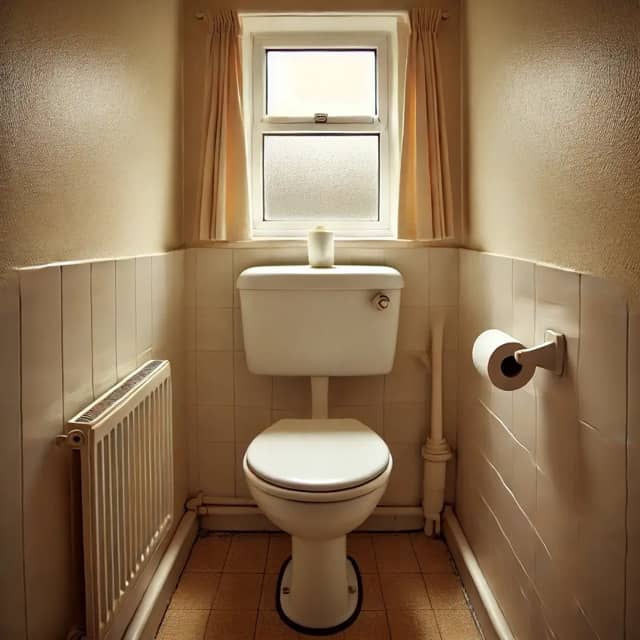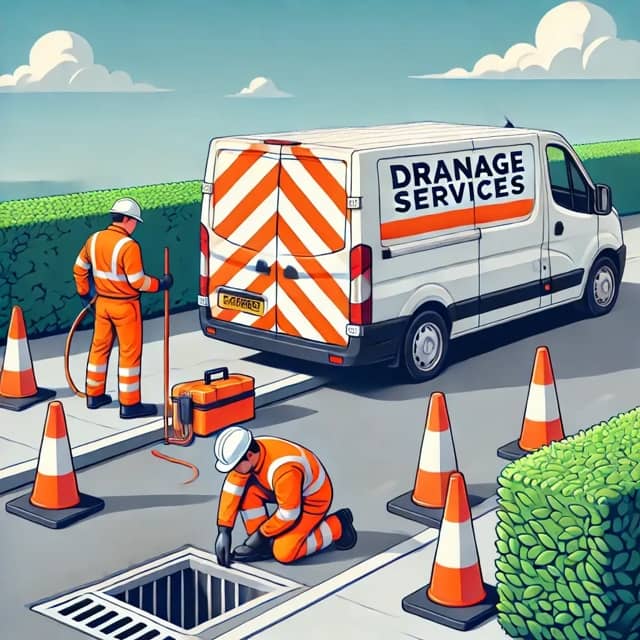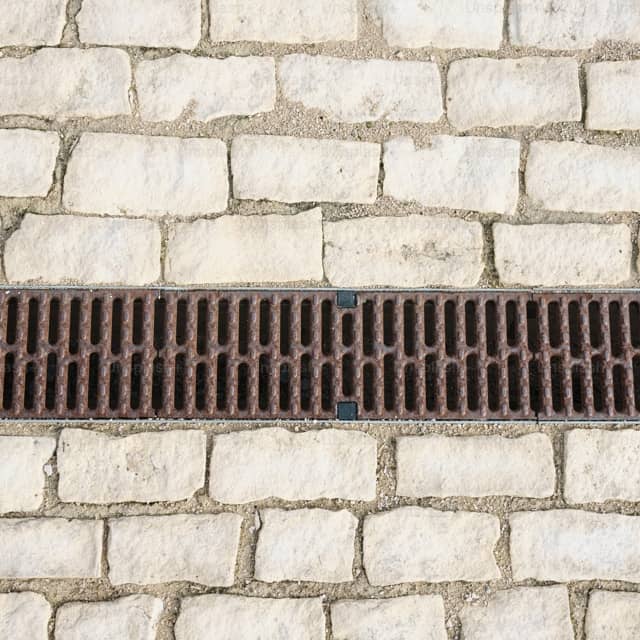Blocked drains often escalate from a small issue to a serious problem. This is particularly the case during wet weather. Look at our Drain unblocking main page here.
Typical Reasons for Blocked Drains in Beeston Hill
Drainage systems in Beeston Hill, can encounter many different kinds of blockages, similar to other locations, often caused by everyday activities. Here are the most common culprits:
Grease and Fat Build-Up
Grease, fat, and oil commonly cause blockages in kitchen drains. When poured down the sink, these substances solidify as they cool, eventually building up and restricting water flow.
In the long run, this accumulation may block the entire pipe, causing water to back up. This is a common problem for takeaways in Beeston Hill.
Accumulation of Hair and Soap
Bathroom drainage issues are often due to hair and soap residue clogging the drains. As it accumulates, it prevents proper drainage, causing water to drain slowly or pool.
Objects That Shouldn’t Be Flushed
Things like wipes, toys, or sanitary products can cause serious pipe blockages. These objects do not dissolve like toilet paper, resulting in large blockages.
Tree Roots and External Debris
Outside drains in Beeston Hill can be affected by tree roots seeking moisture from pipes, as well as leaves and debris during the autumn months.
This can lead to serious blockages in the main drainage system, especially during periods of heavy rainfall.

When to Call a Drain Unblocking Service
If you’re experiencing any of the following issues, it may be time to contact a drain unblocking service in Beeston Hill:
Slow Flowing Water
Slowly draining water in sinks, baths, or showers suggests a potential blockage.
Foul Odours
Bad smells coming from your drains could indicate a blockage caused by decaying food, waste, or other debris stuck in the pipes.
Bubbling Sounds
If you hear gurgling or bubbling sounds when water drains, this could be air trapped by a blockage, trying to escape through the system.
Stagnant Water and Overflowing Drains
If water starts to pool in sinks, baths, or external drains, or if drains begin to overflow, this is a more serious indication of a major blockage.
Local Drain Unblocking Services in Beeston Hill
Calling a professional is usually the fastest solution for a blocked drain. After checking with Beeston Hill council and Leeds City Council, it might be time to call a professional.
Powerful Water Jetting
High-pressure water jetting effectively clears blockages from drains. It works by blasting water through pipes to remove grease, debris, or root blockages. It’s a thorough and eco-friendly method that doesn’t use chemicals.
Snaking and Augering
For less severe blockages, a snake or auger might be employed. These tools are flexible and break up clogs from hair, soap, or objects.
Camera Inspections of Drains
When the blockage source is unclear, CCTV surveys help locate it.
A camera is used to find the blockage and check the pipe condition.
Drain Repairs
Blockages sometimes stem from serious issues like broken pipes. Fixing these issues keeps your drainage functioning for years.

Beeston Hill: A Historic Neighborhood with Modern Drainage Challenges
Beeston Hill, located just two miles south of Leeds city center, is a neighborhood steeped in history.
From its beginnings as a medieval settlement to its role in the industrial revolution, this area has a story to tell at every corner.
However, as with many historic areas, Beeston Hill faces modern challenges, particularly with its ageing drainage systems. Learn more about the history of Beeston Hill here.
A Journey Through Beeston Hill’s History
Beeston Hill’s prominent position made it a key transit route in the 18th century, connecting travelers between York and Manchester.
By the 19th century, the landscape saw significant modifications to accommodate the Leeds tramway, shaping the distinct character of the area.
The steep slopes of Beeston Hill meant that villas and gardens were restructured to fit the infrastructure, and even today, their unique stepped entrances reflect this history.
This transformation was complemented by the rise of coal mining, which became a central part of Beeston Hill’s industrial era.
While these industries laid the groundwork for urban development, they also left behind a complex underground network of disused mines and drainage systems, which now pose challenges for modern infrastructure.
Drainage Challenges in Beeston Hill
Beeston Hill’s historical legacy includes an intricate network of underground tunnels and systems, which, combined with its hilly terrain, can make modern drainage maintenance a unique challenge.
Issues like blocked drains, slow water flow, and even localised flooding are not uncommon in older neighbourhoods like this one.
Factors such as tree roots, sediment build-up, and debris in the drainage system can exacerbate these problems.
Furthermore, heavy rainfall can overwhelm older systems, especially in areas with steep inclines like those found in Beeston Hill.
For residents, signs of drainage problems can include unpleasant smells, water pooling, or slow-draining sinks and outdoor grates.
Addressing these issues early is crucial to avoid long-term damage to properties and infrastructure.
Simple Steps to Maintain Effective Drainage
Maintaining drainage systems in historic areas like Beeston Hill is essential to preserving both functionality and the character of the neighbourhood.
Residents can take proactive steps to prevent blockages, such as:
- Regularly clearing leaves and debris from outdoor drains.
- Avoiding pouring oils and fats down the sink, as these can solidify and block pipes.
- Ensuring gutters and downpipes are free from blockages.
In addition, periodic inspections and maintenance by professionals can help identify issues before they become serious, especially in an area with such a rich and complex history.
Preserving Beeston Hill for Future Generations
Beeston Hill’s charm lies in its rich history, but its infrastructure needs modern care. Proper drainage management ensures the area remains a safe and pleasant place to live, all while protecting its unique heritage.
From the remnants of its mining past to the picturesque steps leading to its villas, every aspect of Beeston Hill tells a story worth preserving.
If you live in Beeston Hill, staying proactive with drainage care is essential—not just for your home, but for the community as a whole.
By addressing drainage challenges today, we can ensure this historic neighbourhood continues to thrive for generations to come.

Who Is Responsible For Unblocking Drains in Beeston Hill: Tenant, Landlord, or Local Council?
In Beeston Hill, Leeds, the responsibility for unblocking drains depends on the cause and location of the blockage. Here’s a breakdown of who typically handles these situations:
Tenant Responsibility
Tenants in Beeston Hill are generally responsible for unblocking drains if the blockage is caused by improper usage. Common examples include:
- Flushing unsuitable items such as wet wipes, sanitary products, or nappies.
- Pouring cooking grease or oil down the sink, which can solidify and block pipes.
- Allowing hair or soap scum to accumulate in bathroom drains.
Tenants should take reasonable care of the drainage system and are often expected to manage minor clogs, such as those caused by everyday use.
Preventive measures like using sink strainers and avoiding flushing non-degradable items can help avoid these issues.
Landlord Responsibility
Landlords in Beeston Hill are responsible for the structural maintenance of the drainage system and addressing significant issues such as:
- Collapsed pipes.
- Blockages caused by external factors like tree roots or long-term wear and tear.
- Ensuring that the drainage system is in good working condition at the start of the tenancy.
If a blockage occurs due to ageing infrastructure or faulty installation, the landlord is typically accountable for repairs.
Landlords must also ensure regular maintenance of the property’s drainage systems to prevent recurring issues.

